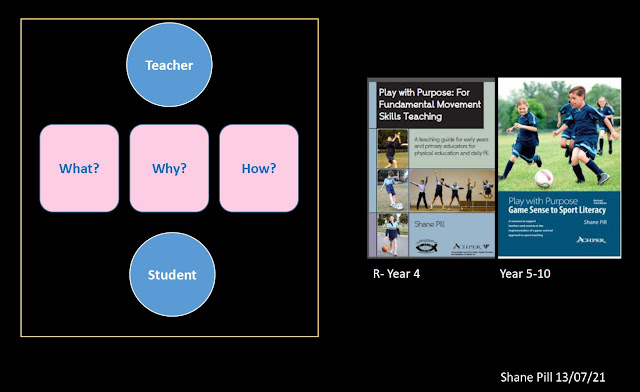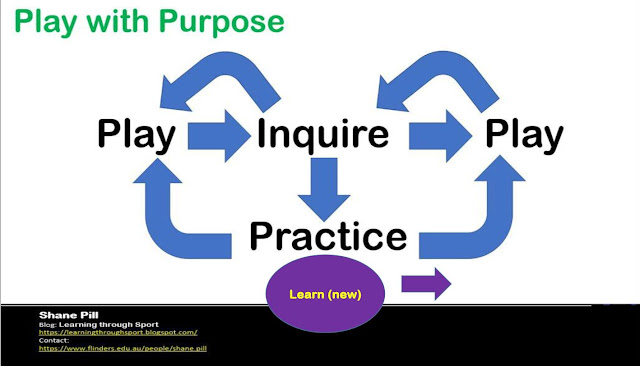Play with Purpose. An educational justification for games and sport in PE
Play with Purpose provides both a curriculum development template and lesson design by addressing teacher decision-making concerning what, why, and how to teach activities in the games and sport focus area of physical education.
Play with Purpose is a response to game based approaches being 'rolled out' as the 'game is the teacher' with the anticipation that, like some sort of osmosis, learning occurs simply by getting students to play a form of modified, adapted, constrained, conditioned (choose the word that fits your skill learning theory) game form. In Episode 33 of the Playing with Research Podcast I discussed how a key pedagogical activity of the teacher is 'stepping back' to observe to notice the 'teachable movement' that the teacher anticipates will occur, as the game has been chosen, adapted, constrained, conditioned, modified with purposeful intervention planned to consolidate, enrich, extend or elaborate the play experience.
As a non-linear pedagogy, Play with Purpose provides a 'model' to frame games and sport teaching as explicit teaching. I have written before (see the paper here and blog here) about Play with Purpose as explicit and deliberate practice.
Consistent with teaching for effective learning principles (see here for a resource that provides a good overview of teaching for effective learning principles across the curriculum) I recommend the first game form be purposefully used to review previous expectations of student learning attainment, and identification of which students need what, if any, practice interventions, and which students might be ready for an elevated game challenge.
A Play with Purpose sequence might then look like this:
This blog is developed from recent professional development presentations with various schools implementing Play with Purpose ideas.
Thanks for stopping by and reading this blog. If you would like to connect with the ideas here or any of the ideas I have blogged about, you can contact via my email here
Or it may be, the teacher uses their pedagogical judgement following the inquiry episode that the 'practice' is needed to introduce a new idea, concept, principle of play in a context of reduced complexity before returning to game play, where the game play now has an added level of complexity from the additional expectation on players performance 'toolkit' developed in the practice activity (I have explained this in a previous blog here). The practice episode in this scenario leads to the next game form.
@ImSporticus provides a very good description of alignment of the teaching for effective learning principles to the Game Sense approach in his blog here. The Game Sense approach aims for the development of 'thinking players': that is, developing players game sense. Game sense as player performance asset exists as three abilities. From a 'pedagogical lens', we can consider the game is the context for the learning purpose, and the 'sense' is the player 'intelligence' being developed - that is, the learning purpose. This intentionally purposeful use of game play is why I call the pedagogical model of the Game Sense approach I outline Play with Purpose.
Recent developments by Sport Australia align the Game Sense approach with physical literacy to realise the objective of playing for life. The Play with Purpose model for teaching games an sport in physical education is therefore suitable to adoption by sports delivering Sporting Schools programs for physical literacy development.
Thanks for stopping by and reading this blog. If you would like to connect with the ideas here or any of the ideas I have blogged about, you can contact via my email here










I’m definitely going to have to start following some of these blogs; I appreciate several from the Information which has been composed.
ReplyDeletevinyl wrap las vegas
Thanks for sharing. , I will visit once more.
I appreciate several from the Information which has been composed, I will visit once more.
ReplyDelete